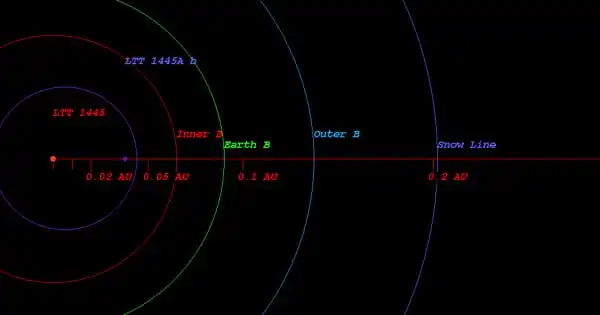On January 18, the stony asteroid (7482) 1994 PC1 will pass safely by Earth. Given its size of roughly 1 kilometer (0.6 miles) and proximity to our planet, the object is classified as potentially dangerous, however, there is currently no known danger. The asteroid will be 1.98 million kilometers (1.23 million miles) from Earth tonight at its closest point, which is more than five times the distance between Earth and the Moon. Its close passing has fewer than 150 kilometers of uncertainty (93 miles). For the next 172 years, this is the closest it will get to us. We have nothing to be concerned.
This flyby is a fantastic opportunity for astronomers to study asteroids since it gives them a chance to learn more about this object and its class. It also aids in the refinement of our orbital computations of such objects, allowing us better predict future close passes. The next near approach under 5 million kilometers (3 million miles) will take place on January 18, 2105, while the one after that will take place on January 20, 2194. Both of these flybys will be farther apart than the one scheduled for tonight.
Despite its size and proximity, the asteroid is not particularly brilliant, with a maximum brightness of 10. So it is not something you can see with just your eyes or binoculars; you will need a powerful telescope to see it. If you do not have one or the weather is not cooperating where you are, the Virtual Telescope crew will broadcast it live on their channels later tonight at 19:30 ET (22:30 UTC).
On Tuesday, an asteroid will fly safely past Earth, and you can watch it all unfold from the comfort of your own home. This is everything you need to know about catching a glimpse of this once-in-a-lifetime cosmic event. A near-Earth object is defined as an asteroid or comet that comes within 1.3 astronomical units (120.9 million miles) of Earth, according to Space.com.
According to CBS News, the asteroid is wider than the world’s tallest building. It is around 3,280 feet across, or about twice the height of the Empire State Building in New York (which is about 1,454 feet from top to bottom). Intimate encounter: The asteroid will most likely pass Earth at a distance of 1,231,184 miles. According to CBS News, this is the closest an asteroid has come to the globe since an asteroid passed less than 700,000 miles away on Jan. 17, 1933. How to watch: A YouTube stream sponsored by Italy’s Virtual Telescope Project will broadcast the asteroid’s close approach to Earth live at roughly 1 p.m. MST.
















